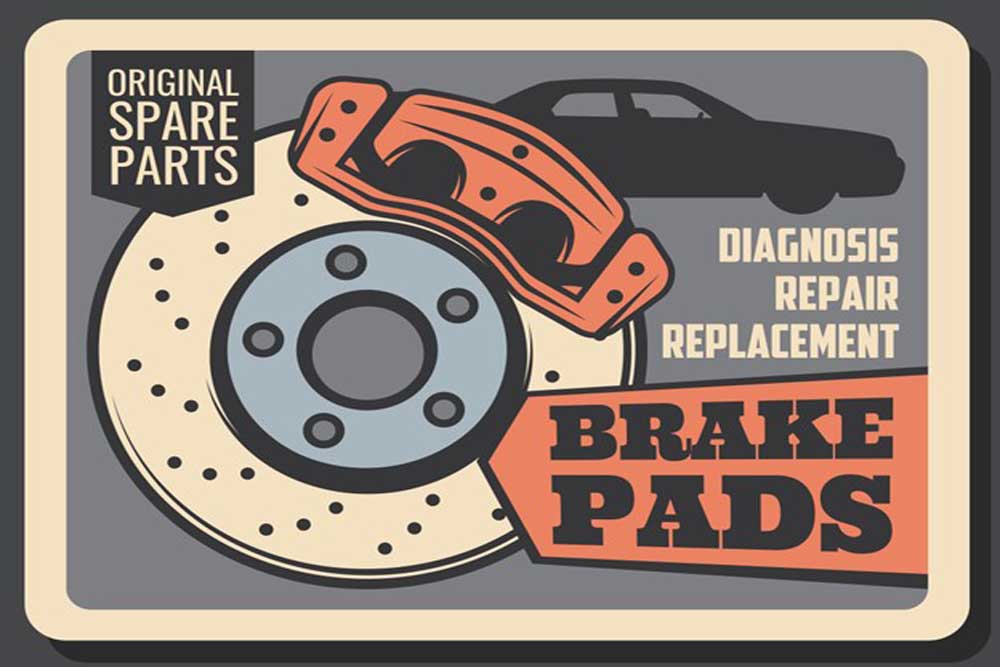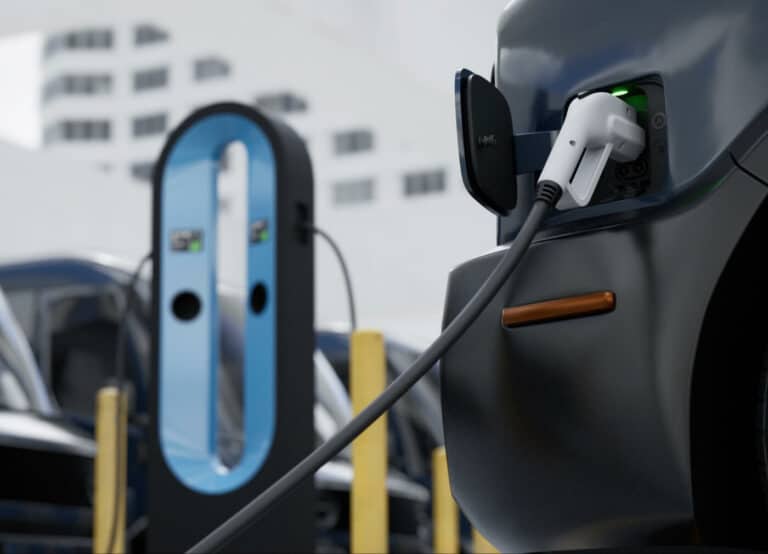Changing the discs and brake pads of a vehicle is a common task in workshops.
The main braking system or service brake, is the unit in charge of reducing or canceling the speed of the vehicle. The foundation of this system is friction braking: a fixed part presses against a mobile part attached to the wheels and, thanks to this friction, the vehicle is braked. The goal of any brake system, whatever the load or speed conditions, is that braking is precise, safe, fast and effective. There are two variants of braking systems: the drum brake and the disc brake, and this article focuses on replacing the wear elements of the latter.
Disc brake systems
Disc brake systems are used in many types of vehicles (SUV, hybrids, utility vehicles, and off-road vehicles, among others). They were originally intended for high-end vehicles, but their use has spread and is currently the most widely used technology.
This system is based on a disc located on the turning axis, attached to the turning movement of the wheels, and two pads fixed to the vehicle structure by means of a clamp (also called a caliper). As soon as the brake pedal is actuated, brake fluid is propelled into the braking system and a hydraulic piston is actuated, pushing the pads against both sides of the disc.
Process to change brake discs and pads
Then, the main steps of the process to change disks and brake pads are described:
Condition the vehicle. The first step is to get the vehicle in the right position to do the job. It must be raised off the ground (by means of a lift or hydraulic jack) to allow freedom of rotation for the wheels.
- Release pressure from the hydraulic circuit. It is advisable to open the cap of the brake fluid reservoir to avoid that, later, when pressing the brake caliper plunger, the fluid overflows through the reservoir due to the pressure of the circuit (this fluid is highly polluting for other components).
- Remove the wheels whose braking system is to be renewed. It is advisable to change the brake discs and pads on both wheels on the same axle to ensure balanced and safe braking.
- Remove the pads. The brake caliper guide bolt screws have to be manually loosened and the piston moved, retracting it, to release the brake pads.
- In many latest-generation vehicles, it is essential to enable, in the instrument panel menu, the option “replacement of brake pads” so that they adjust to their removal position.
- Remove the brake calipers. Before removing the calipers, the revolution sensor on each wheel and the wear indicator (if the vehicle is equipped) must be disconnected.
- Evaluate the wear of the brake discs to verify that it has been equal on both sides. Otherwise, lubrication or replacement of some of the guide pins may be required.
- Clean the brake calipers. Any type of residue or grease must be removed from the calipers to guarantee the smooth operation of the braking system. On the market, there are specialized products for cleaning this component, such as LOCTITE SF 7235.
- Change the brake discs. To remove the discs, you must remove the central screws. Next, the new discs are installed (it is advisable to renew the screws each time they are removed). In this step, it is essential to observe the screwing sequence and the tightening torque indicated by the manufacturer in the vehicle’s workshop manual. Failure to comply with this recommendation can cause a deformation of the disc surface or the appearance of cracks around the screw-in points, which could lead to possible vibrations of the brake pedal and premature wear of both the disc and the pads.
The braking system of each car is designed according to the size and power of the vehicle. For this reason, it is essential that, when changing brake discs and pads, you opt for a model similar to the one fitted as standard or a higher range. A poor choice of brake discs can lead to a serious breakdown and jeopardize the safety of the vehicle.
There is a wide variety of brake disc options on the market, from solid discs, used in lower-mid-range vehicles, to vented, perforated, scratched, wavy, or combined discs, designed to better dissipate heat.
Another factor that can affect the quality of brake discs is the material from which they are made. Although they are usually made of steel, there is a much more expensive variant: ceramic discs, used essentially in high-end models or in competition cars, where the braking requirement is greater.
Fit the new pads. To do this, the plunger of each brake caliper must be pressed in order to retract it and get each pad inserted. When re-tightening the guide bolts, the correct tightening torque must be guaranteed according to the manufacturer’s instructions, since incorrect assembly can lead to the pads not being perfectly parallel to the discs and each side wearing out. At a different pace. This situation could lead to vibrations and a possible reduction in braking efficiency.
With regard to the tablets, there are also different types depending on the material from which they are made, and the choice of the most appropriate option is essentially dependent on the use they are going to receive. The most commonly buy used cars online are: organic (pads for soft and quiet use but low performance), soft metals (pads that perform better than organic ones and are durable but more aggressive with discs), metallic (more expensive pads and better performance), and ceramic (more expensive pads, longer lasting, and unbeatable braking efficiency).
- Check the operation of the braking system. Once the brake discs and pads have been changed, the brake fluid reservoir must be plugged again, and the brake pedal must be applied several times to verify that the system works.
If applicable, “brake pad replacement” must be disabled in the instrument cluster. Carrying out a dynamic test at the end of the work will guarantee the correct functioning of the system.
When is it necessary to check the vehicle’s brake system?
Although manufacturers establish a periodicity to change brake discs and pads, it is the user himself who must attend to deviations that appear in the operation of the brakes and take the vehicle to his trusted workshop when necessary.
The following are the symptoms that alert you to when it is essential to check the brake system:
- Squeaks when you press the brake pedal.
- The brake pedal goes harder or too soft.
- Loss of braking effectiveness.
- The vehicle tilts when you press the brakes.
Vibration of the brake pedal. Change in brake pedal travel.
Recommendation
Manufacturers usually mark a periodicity to change the brake discs and pads depending on their type. However, the driving style, the type of vehicle (weight, PMA, power, etc.), and its general use are what determine the precise moment for its replacement.
As a general rule, discs are usually renewed every two pad changes, although it is always advisable to check them each time they are replaced. In the case of the pads, the normal thing is that those of the front wheels suffer more accelerated wear than those of the rear wheels.
Among the actions recommended by the manufacturer for preventive maintenance are the following related to the brake system:
Check the level and condition of the brake fluid. The fluid must be replaced according to the manufacturer’s instructions.
Check the brake discs and pads. Changing brake discs and pads is not a mandatory scheduled task, but each maintenance check should check that they are working properly.
Keeping the brake system in perfect working order is essential for active safety. It is essential to follow the manufacturer’s maintenance recommendations and change the brake discs and pads when necessary to reveal and prevent possible problems.











